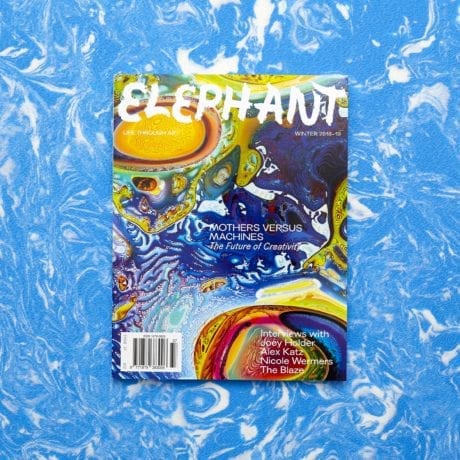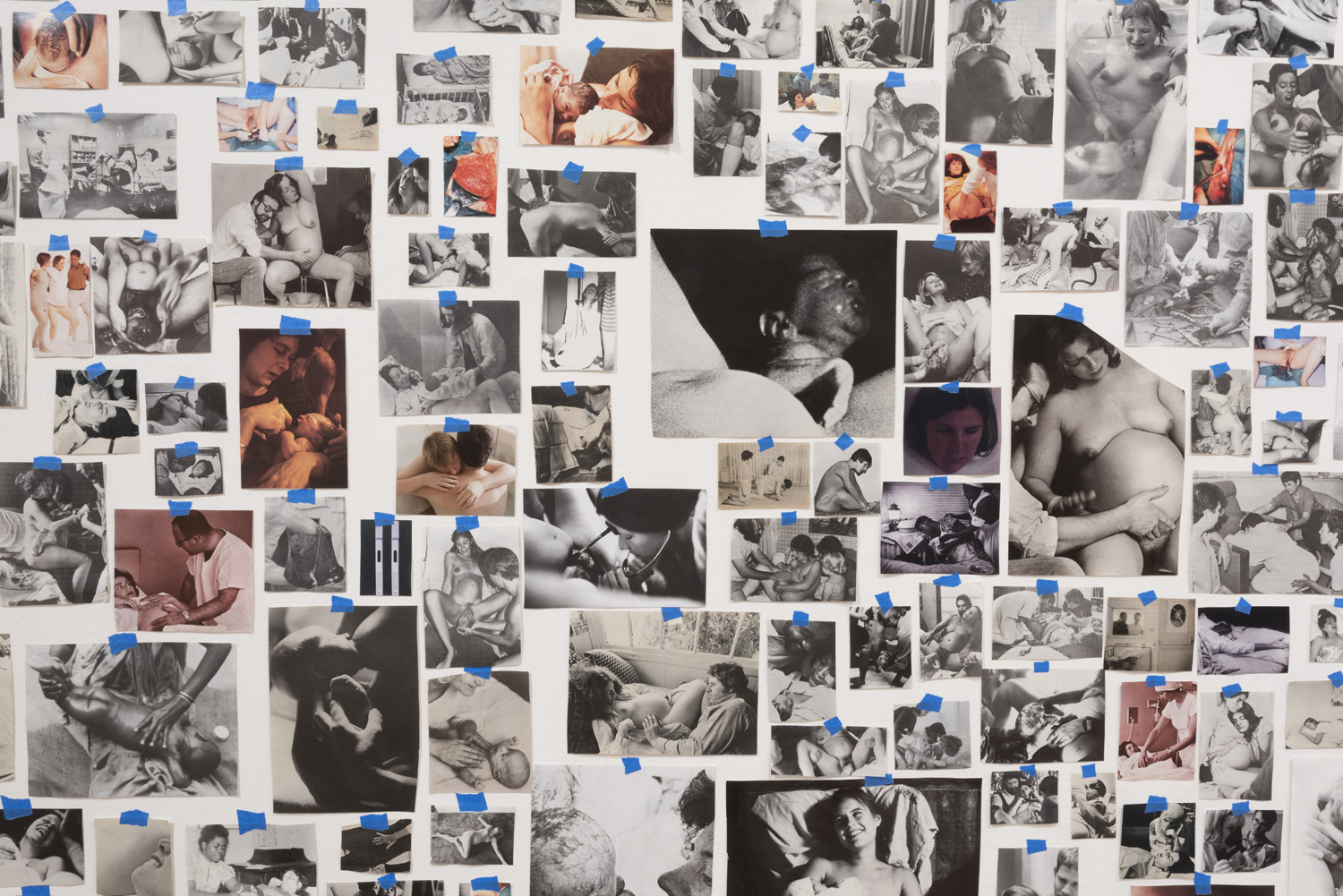
I gave birth eighteen months ago. In the last two years, my body has been through the full works: the metallic taste and extreme tiredness of the first weeks of pregnancy; skin stretching over a growing bump; a nuchal fluid scare, tears; sharp shooting pains in my legs in the middle of the night; varicose veins and thick hair. Later, a huge belly, and feet with flabby sacks of fluid that flapped when I walked. I have been poked and prodded with speculums, vials of my blood have been drawn and syringes jabbed in. My uterus has stretched, my womb has emptied, my labia have been ripped. All this stretching, pulling, tearing, swelling and deflating is what creates life; it’s the stuff women experience on a regular basis. Yet in one of the places where we marvel at the mystery of creation the most—galleries, museums and libraries—birth is strangely absent. In fact, in ten years of frequent gallery-going, I can only remember one work of art that directly depicted childbirth: a series of photographs, close-up shots of babies’ heads as they emerge from their mothers, bodies still inside, by Heji Shin. The most extraordinary thing we can create—life—is a subject that artists seem to avoid. Why? Is childbirth too ugly to show in visual art? Is it too terrifying? Or is it, as conveyed in Wangechi Mutu’s cosmic drawings, something that is too mystical, too mysterious?
There are approximately 250 babies born every minute—by the time you’ve read this article, almost 4,000 babies will have been born, meaning around 4,000 women will have been through the experience of childbirth. And yet the most recognized cultural image we have of this moment is the Hollywood creation myth: flood of water, screaming, sweat, PUSH!, baby.
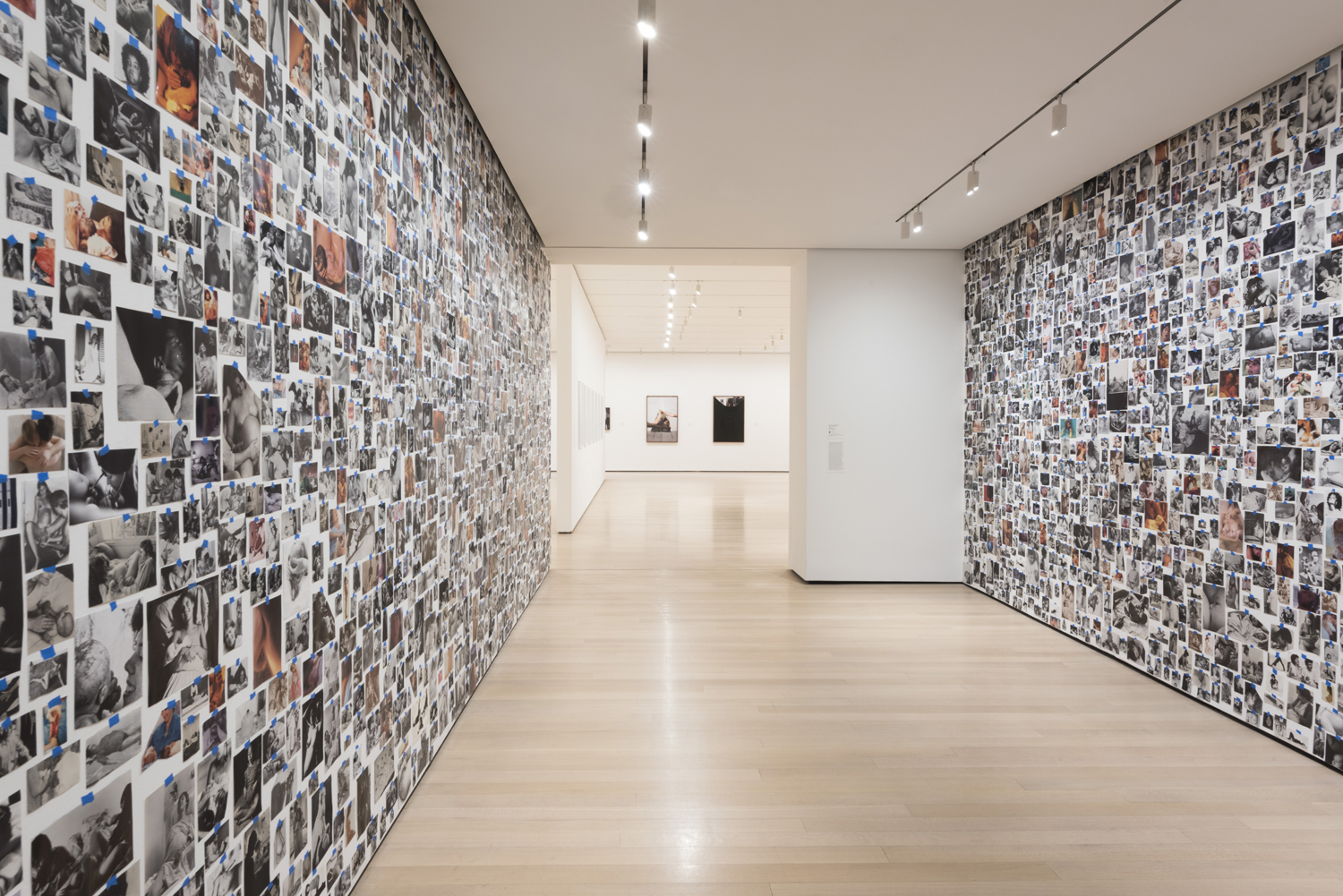
The Ancient Egyptians saw childbirth as a quasi-magical process, protected by deities; reliefs carved into ancient birthing stools and gynaecological artworks show recognition of the physical and psychological struggle women go through and offer comfort and guidance, as well as medical detail. In the prehistoric period, symbols of childbirth and fertility made their way into rugs in Turkey and Iran. It’s this kind of feeling that Mutu conveys in her works. Since the 1990s, the artist has often returned to the mystifying process of giving birth and becoming a mother.
Even as women began to be recognized as artists in the nineteenth century, visual representations of childbirth were rare. At the beginning of the twentieth century, Frida Kahlo and Alice Neel were some of the first to broach the taboo subject in their paintings. Kahlo had a miscarriage, and would never have a child; Neel delivered four healthy children. Both painted about the cataclysmic experience in a nuanced, deeply emotional and uncompromising way. The way their work has been interpreted over the years, however, presents their experiences of childbirth on canvas as too personal to look at for too long—missing that sense of universality of experience that links so many women together.
“The most recognized cultural image we have of this moment is the Hollywood creation myth: flood of water, screaming, sweat, PUSH!, baby”
Louise Bourgeois remains one of the only major artists of the twentieth century to debunk our ideas around childbirth. Her 1994 work Birth, part of a series of autobiographical etchings, is one of her more direct depictions of childbirth, showing the excruciating moment the baby’s head is pushed out of its mother. In the etching, the baby’s head is drawn as big as her own. It captures a physical feeling, the surreal force that brings the baby’s still soft bones through the birth canal and into the world, as well as the strangeness of the final separation from the being which has inhabited your body for nine months, cutting the cord that has attached you and breaking you into two: one new life, one life reborn as a mother. Equally as honest and indelible from contemporary art discourse are Tracey Emin’s writings and works (including her collaboration with Bourgeois) on abortion. The traumatic, enduring effects of abortion, miscarriage and birth are part of the texture of human experience, but few artists now are willing to address them as candidly as Emin.
The American conceptual artist Mary Kelly remembers “feeling powerful” when she gave birth to her son. “It connected me in a very fundamental way with the experience of other women.” Kelly’s most famous work is about birth, Post-Partum Document. First shown in London at the ICA in 1976, the work is a conceptual record of the first six years of Kelly’s experiences as a mother, complete with nappy liners. Kelly—who recently returned to London for Frieze London’s Social Work and a solo show at Pippy Houldsworth Gallery—recalls the impetus behind the work. “While I was working on the film Nightcleaners (1970-75) and the installation Women & Work (1973-75), the conversations with cleaners and factory workers made me realize that a woman’s role as mother underpinned her secondary status at work in two significant ways: one was obvious, that is, childcare meant restricted hours and lack of promotion, but the other, more subtle, was the internalization of that role, which made the discriminatory division of labour seem natural and expedient.” When her son was born in 1973, “I decided to record the details of this intimate labour and the process of socialization we call the family, but above all, in Post-Partum Document (1973-79), I was trying to understand how maternal subjectivity was formed in that process.” While Post-Partum Document isn’t docile, it is an orderly, intellectual work, situated in the clean context of patriarchal psychoanalysis. It avoids the messy, physical matter.

“There is something so masculinized about that work to me,” says Carmen Winant, whose raw My Birth project is one of the first extensive works to critically survey birth through visual material—her 2,000 image installation was shown at the MoMA early in 2018. The images Winant has collected are real, documentary, informational. There is an unavoidable truth that this is a female-body experience. I wonder how it feels to be a mother of sons?
“I always imagined myself the mother of girls. In part because I liked the idea of raising daring women, and in part because—how do I say this—they will never know the experience of birth. It is a closed loop. When I gave birth for the first time my mother was in the room, assisting me. I kept thinking: what must this be like for her, to witness her child having a child? That is not an experience that I will ever know,” Winant replies. “Of course, my sons are amazing forces in the world: they are tender, wild, curious, open-hearted animals. I do sometimes think, and worry, about the moment(s) in which our bodies will diverge, when I won’t be able to comfortably be with them naked anymore, or understand the social worlds they live in, but I will surely grow to accept this difference. We are so close now, our bodies feel like they fold into each other, and that will always mean something.”
“It’s so basic, it’s so much life—it’s the starting of life. It’s essential—everyone goes through it”
“The connection to your child is so bodily,” agrees Catherine Opie. Winant is a former student of Opie, whose Self Portrait Nursing, a photograph she took of herself feeding her son Oliver, now sixteen, is one of the standout works on motherhood of our times. Opie made the portrait, she tells me on the phone, to confront the trope in art history. As a queer-identified butch woman, “even being pregnant was a big deal within my own community”, she explains. “My response was, well, my body does it, and I want to have a child. I want to experience this. “I’d put my body through other extremes and for me childbirth was the most interesting and extreme… I remember seeing him, this person that had grown inside my body, and being blown away by the fact that women can do this.”
Another lesser-known portrait by the artist is of her grandson, in his father’s arms, aged just one day old. “I felt that was a really important photograph to make. Men get left out of the equation as well—that intimate portrait, taken first day home from hospital, is as important to me as Self Nursing Portrait, on a really personal level.”
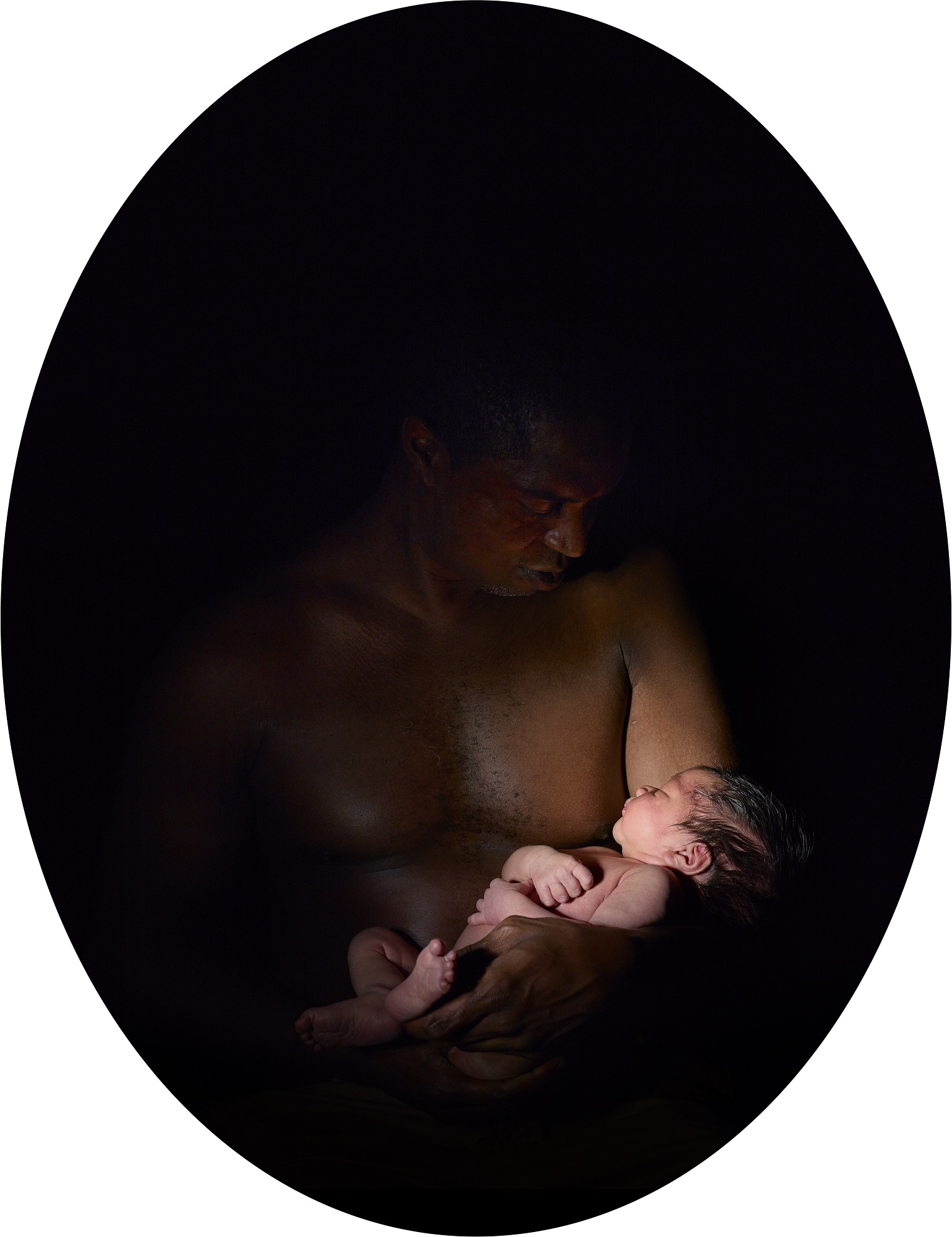
“In magazines and advertisements you see these pictures of mothers with babies and there is always a pink cloud over it,” says Rineke Dijkstra. Her New Mothers (1994) series of three portraits of women clutching their newborns is perhaps the most iconic work on new motherhood, and one of the only works to have incisively captured the physical side of childbirth in contemporary art. In 1991 Dijkstra witnessed her best friend giving birth, and was struck. “She was happy, confused, exhausted… it was such a special moment, so intense. I thought I should see if I could capture these seemingly contradictory emotions in an image.”
Three years later, and not without difficulty, Dijkstra had found three women in her own environment willing to be photographed: Julie, Saskia and Tekla. “It was an experiment,” the artist recalls. “I wanted to portray them standing, as I had seen my friend, with the baby in her arms. I also felt I had to isolate them, to take out daily life. The pictures were not so much about their personal life, but more about experiencing an intense moment.” The New Mothers have often been compared to Dijkstra’s Self-Portrait after Swimming, shot in 1991, when the artist was in recovery from a serious injury following a car accident, and her later series Bullfighters (1996), which comprises portraits of matadors taken just after a fight.
“Somewhere between natural and the posed,” as she puts it, they are attempts to catch a transcendent physical state. What makes Dijkstra’s portraits of Julie, Saskia and Tecla so compelling is that they reach beyond something only a woman who has given birth can understand, to something fundamentally human.
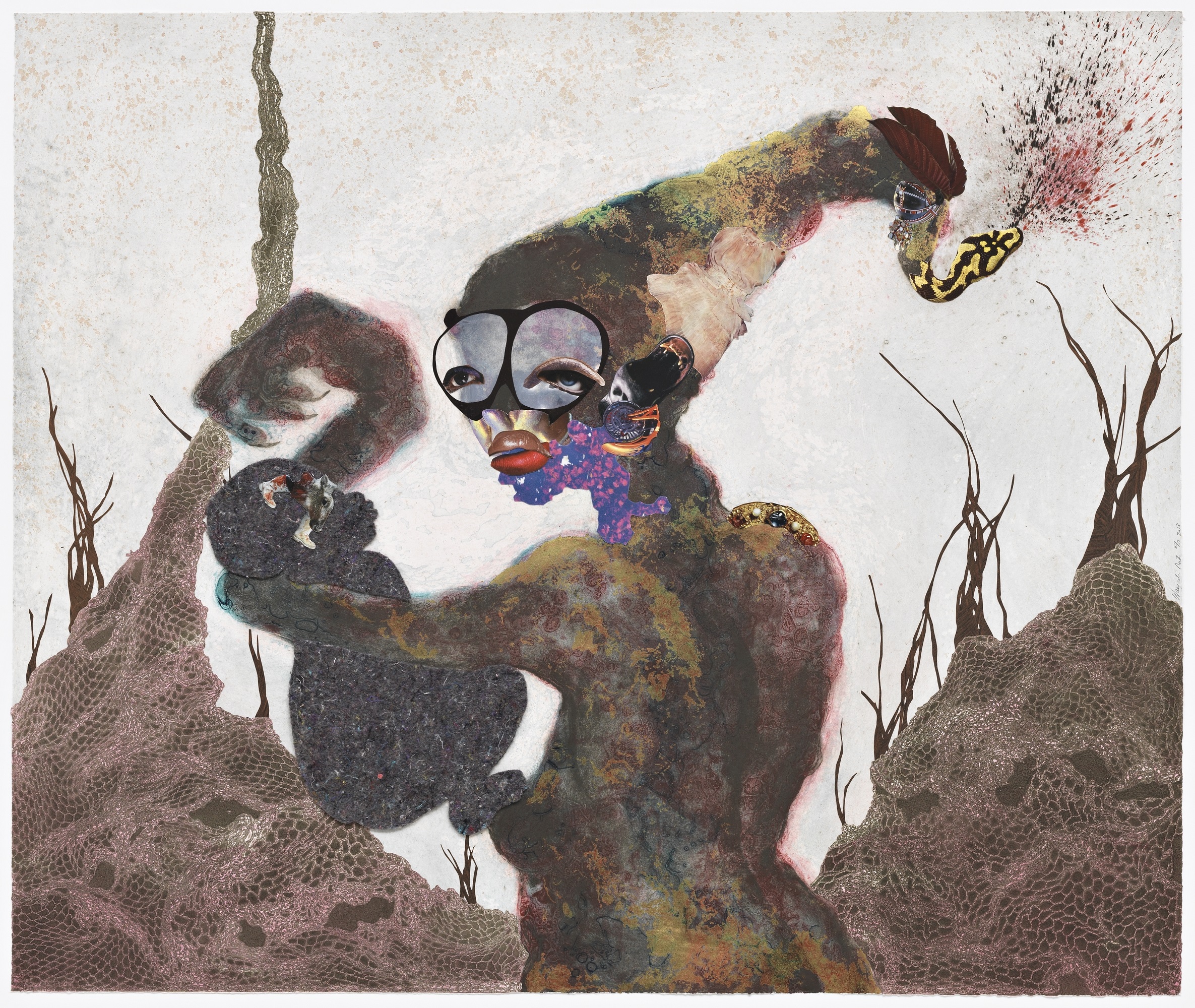
The New Mothers babies all turn twenty-four this year. In the portrait that is usually referred to as the most searing of the three, taken one hour after birth, Julie is covering her son’s eyes to protect them from Dijkstra’s flash, as blood trickles down her leg, the wedge of her maternity pad visible. “It was my fastest photosession ever,” the artist says of the shoot. “I took only four pictures.”
Dijkstra has decided to publish the works solely in her own books. “I’m so afraid of misunderstandings,” she explains. “They’re so provocative somehow for some people.” When New Mothers was first shown at the Stedelijk Museum, many thanked her for the photographs, but some critics responded aggressively, suggesting it was wrong to show women in this way, Dijkstra recalls. She may not have intended for New Mothers to become such an important work in the discussion of birth and motherhood, but they are unique. Why does she think they have such an effect on people, still today? “Maybe because it’s so basic, it’s so much life—it’s the starting of life. It’s essential—everyone goes through it.”
This seems to me the exact reason we can, and should, expect to see more about birth in art. We have all experienced birth to be here. In the Western media, politics and literature, childbirth is starting to be discussed more—and social media has opened up space for women to share their experiences with candour, and in their own words. At the same time, many female artists I talked to have expressed a pressure to separate their family life from their practice—for fear that their experiences will be seen as trivial or too mundane. “I do think that stigma is changing,” Winant observes. “Motherhood is becoming—and this sounds ridiculous to say—interesting. This is to the credit of women, who have braved the hostile winds for so many years, deciding and affirming that their experiences were valuable.”
This feature originally appeared in issue 37
BUY ISSUE 37